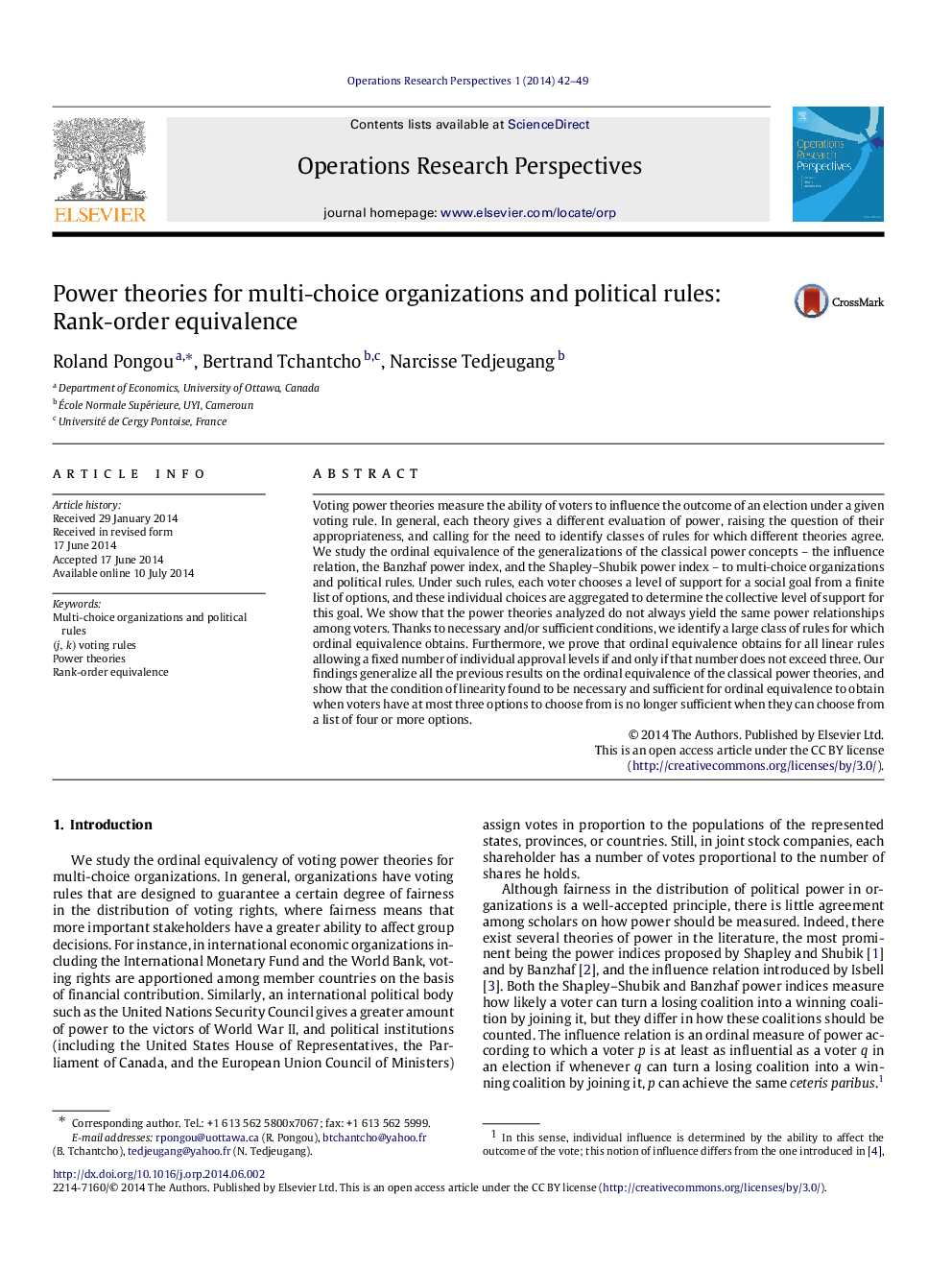| کد مقاله | کد نشریه | سال انتشار | مقاله انگلیسی | نسخه تمام متن |
|---|---|---|---|---|
| 488234 | 703707 | 2014 | 8 صفحه PDF | دانلود رایگان |
Voting power theories measure the ability of voters to influence the outcome of an election under a given voting rule. In general, each theory gives a different evaluation of power, raising the question of their appropriateness, and calling for the need to identify classes of rules for which different theories agree. We study the ordinal equivalence of the generalizations of the classical power concepts–the influence relation, the Banzhaf power index, and the Shapley–Shubik power index–to multi-choice organizations and political rules. Under such rules, each voter chooses a level of support for a social goal from a finite list of options, and these individual choices are aggregated to determine the collective level of support for this goal. We show that the power theories analyzed do not always yield the same power relationships among voters. Thanks to necessary and/or sufficient conditions, we identify a large class of rules for which ordinal equivalence obtains. Furthermore, we prove that ordinal equivalence obtains for all linear rules allowing a fixed number of individual approval levels if and only if that number does not exceed three. Our findings generalize all the previous results on the ordinal equivalence of the classical power theories, and show that the condition of linearity found to be necessary and sufficient for ordinal equivalence to obtain when voters have at most three options to choose from is no longer sufficient when they can choose from a list of four or more options.
Journal: Operations Research Perspectives - Volume 1, Issue 1, March 2014, Pages 42–49
